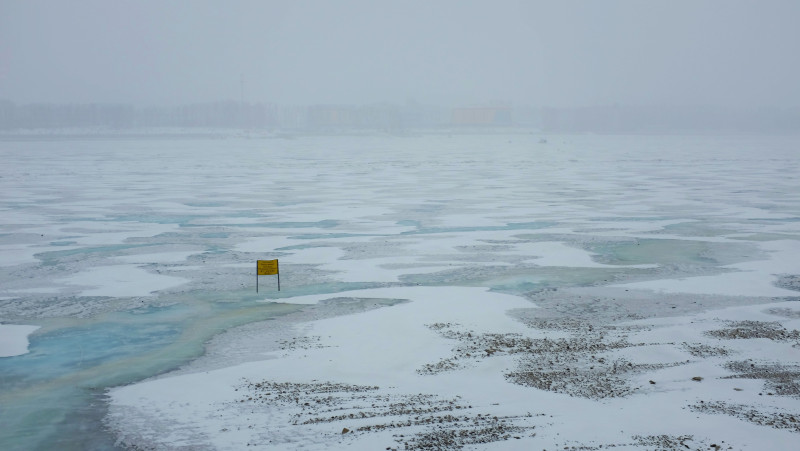Blog: China’s one belt, one road project, comes to the Arctic

I’ve just published a new article in the peer-reviewed journal Area Development and Policy called “The Silk Road goes north: Russia’s role within China’s Belt and Road Initiative.”
The article is available to read online here (paid firewall; but a copy is also available on academia.edu).
The Belt and Road Initiative (BRI) is the name that the Chinese government is using to describe what the media has referred to as the “One Belt, One Road” strategy. The policy envisions the construction and rolling out of land and maritime transportation networks to connect China to the markets and resources of the Eurasian continent while also providing an outlet for China’s excess capacity in steel.
Although counties in Central Asia like Kazakhstan receive the bulk of the attention in terms of how they fit into BRI, Russia also forms an important transportation nexus within the project. The Russian Arctic in particular has attracted BRI planners’ interest, for the region is rich in oil and gas. The seasonally ice-covered Northern Sea Route could also potentially offer a shorter shipping lane between China and Europe than the Suez Canal, enabling the creation of a so-called “ice road” within the larger network of maritime and land routes that constitute the new Silk Road.
Trade and transportation connections between Russia and China are nothing new. In the article, I briefly explore the history of commerce and transport links between the two counties. These were formalized in 1689 by the Treaty of Nerchinsk, which delineated China and Russia’s shared border along the Amur River. In the three centuries that have followed, the two countries have waffled between awkward friendship and all-out enmity nearly exploding into war.
1891: Russia builds the Chinese Eastern Railway
In 1891, the Russo-Asiatic Bank was established in St. Petersburg partly in order for the Russians to build railways in China such as the Chinese Eastern Railway. This railway allowed Russia to cut across Manchuria (northeast China) to the city of Vladivostok on the Pacific Coast, shortening an all-Russia route by approximately 500 miles. As I explain in the article, “the Russian state ultimately held supervisory power over the railway and had the unusual right to transport Russian military forces along it, while the Russo-Asiatic Bank could build subsidiary railways, telegraph lines and mining explorations.”
In the 1950s under Joseph Stalin, the Soviet Union continue to provide material and technical assistance to the Chinese, who were yearning to industrialize quickly under Chairman Mao Zedong. This program came to a halt with the Sino-Soviet Split in 1960, which endured until 1989. The two communist countries of China and Russia had fallen out over differences in ideology, and Soviet engineers were sent home.
Today: China lends know-how and capital to Russia
In the 21st century, China and Russia have had reversals of fortune. China’s economy is booming while Russia’s is faltering as the bottom continues to fall out from under the price of oil. The Chinese Politburo is now looking to construct railroads across Russia in order to gain access to its resources and markets in Europe. As a result, Chinese companies are providing capital and expertise to projects like the Moscow-Kazan high-speed railway and, importantly for the Arctic, the Yamal Liquefied Natural Gas (LNG) project. In one of the northernmost reaches of Russia on the Yamal Peninsula, the Silk Road Fund, a state-run investment vehicle associated with BRI, has lent US$12.1 billion to the Yamal LNG project in exchange for a 9.9% stake. If and when Yamal LNG comes onstream as planned in 2017, LNG will be shipped to Asia in summer and Europe in winter via South Korean-built ice-class tankers.
The Silk Road Fund’s loan to Yamal LNG represents China’s first investment in Russia’s oil and gas sector and may signal a shift away from previous energy agreements between the two countries. These were made more with a view towards Russia serving as an energy supplier rather than as a place in which China was willing to actually make investments in energy. If Yamal goes well, then it is possible that the Chinese government, possibly under the auspices of the Silk Road Fund or the Asia Infrastructure Investment Bank, may make future loans to projects in the Russian Arctic. In Yakutsk, Chinese-state owned company SinoHydro, a hydropower engineering company, may build a long-awaited bridge across the Lena River that would grant the city of 300,000 people year-round access to Russia’s rail and road networks. China also has the knowledge to build railways on permafrost, as it did when it built the Qinghai-Tibet Railway, completed in 2006.
As U.S. and E.U. sanctions on the Russian energy sector continue with no end in sight, China may have an opportunity to rewrite the rules of Russia’s Arctic development. Already in Africa, Chinese state-owned firms have exercised a significant effect on development in countries like Zambia and Tanzania. Beijing’s goals in Africa have been described by UCLA sociologist Ching Kwan Lee as oriented towards the creation of long-term access to resources and political influence rather than a sole focus on short-term financial gain, as is characteristic of global private investment. Given the tumultuous nature of the Sino-Russian relationship, Yamal could end up becoming something that the Silk Road Fund comes to regret. But if China’s involvement in African development is any sign, in the Arctic, the dragon is here to stay.
Read “The Silk Road goes north: Russia’s role within China’s Belt and Road Initiative” here.
This post first appeared on Cryopolitics, an Arctic News and Analysis blog.

Related stories from around the North:
Canada: Blog: To understand the road to the Arctic Ocean, first go south, Mia Bennett
Finland: Drone applications on the rise in Finland, Yle News
Norway: Norway improving infrastructure on Arctic island, Barents Observer
Russia: Murmansk opens biggest highway north of Arctic Circle, The Independent Barents Observer
Sweden: Sweden opens world’s first electric highway, Radio Sweden
United States: Alaska’s North Slope fortifies against highway flooding, Alaska Dispatch News



